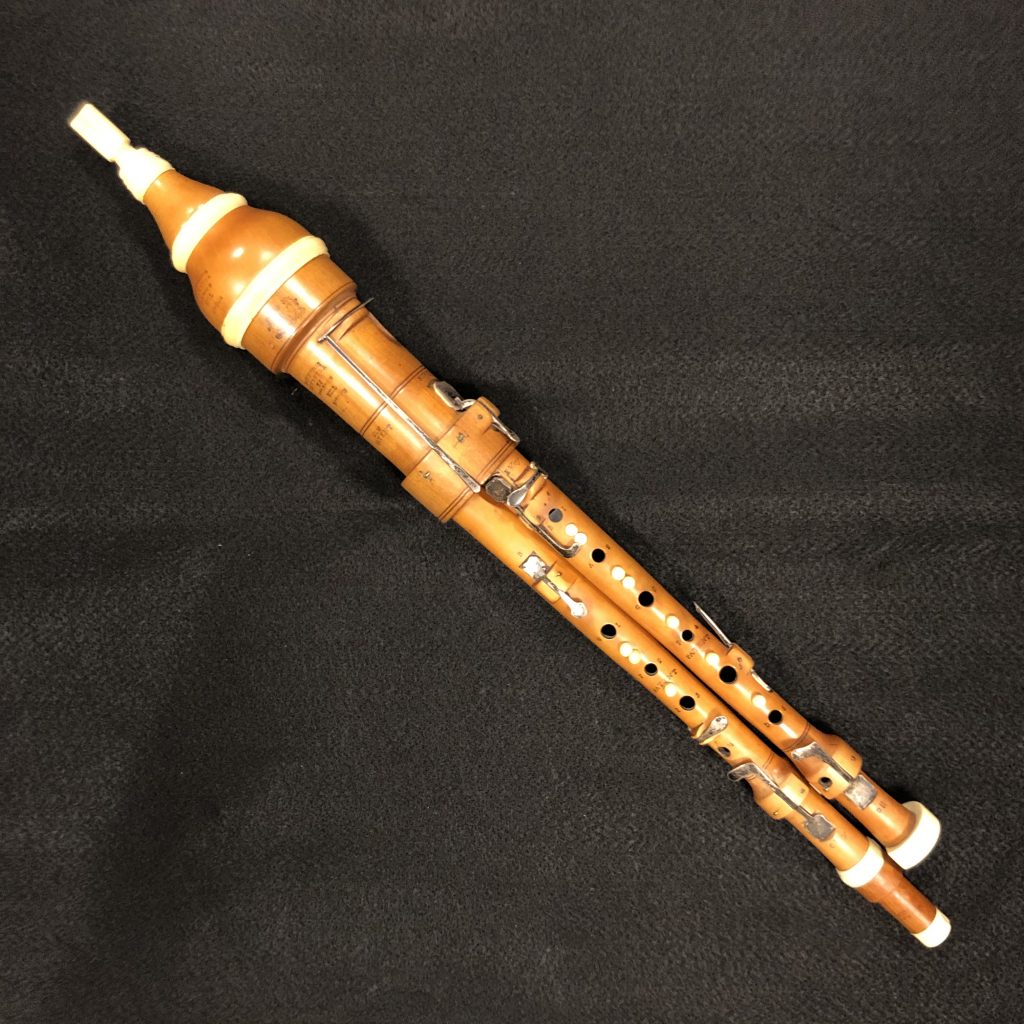The Flageolet
Woodwinds
Europe
Between 1001 and 1900 AD
Video
The name “flageolet” derives from the Old French word flageol, meaning “pipe” or “tabor pipe.” This term has been associated with such flutes since at least the 13th century, but by the late 16th century, it specifically referred to a form of the instrument developed in Paris. The flageolet is a woodwind instrument that has its origins in France, with a history that spans several centuries.
Historical Development
Early Instruments: The earliest versions of the flageolet appeared in the 15th and 16th centuries, resembling recorders of that time. These initial designs featured a simple construction with finger holes for pitch control.
French Flageolet: The traditional French flageolet typically has four finger holes on the front and two thumb holes on the back. This design was popularized in the 18th century and was played by notable composers and musicians such as Hector Berlioz and George Frideric Handel.
English Adaptation: In the late 18th century, English instrument makers, notably William Bainbridge, adapted the flageolet by adding six finger holes on the front and sometimes keywork. This version became known as the English flageolet and was produced in metal as tin whistles.
Popularity and Usage
The flageolet gained popularity in England during the mid-17th century, often used as an amateur instrument. It played a significant role in orchestras during the 18th century, akin to what the modern piccolo does today.
The instrument’s soft and gentle tone made it appealing for various musical contexts.
Decline and Legacy
By the 19th century, the flageolet began to decline in popularity, largely replaced by instruments like the tin whistle. Despite this decline, it remains an important part of woodwind history, showcasing the evolution of fipple flutes and their role in music across different cultures.
The flageolet is a woodwind instrument that operates similarly to other duct flutes, such as recorders and tin whistles. Here’s how it works:
Structure and Design
Mouthpiece
The flageolet features a mouthpiece that directs air into the instrument. In French design, the mouthpiece resembles that of a recorder, while later English designs incorporated an elongated windcap that helps collect moisture.
Duct and Labium
Air blown into the mouthpiece passes through a duct and crosses a window where it is split by the labium (the edge or lip). This action creates sound as the air vibrates within the body of the instrument.
Finger Holes
The flageolet typically has four to six finger holes, depending on the model (French or English). Players cover these holes to produce different pitches. The arrangement of these holes allows for a unique scale different from that of other similar instruments.
Sound Production
Airflow: To produce sound, the player blows gently into the mouthpiece. The strength and angle of the airflow can affect the tone quality and pitch.
Fingering Technique: By covering different combinations of finger holes, players can create melodies across a range of about two octaves. Cross-fingerings may be necessary to access certain notes not directly available through standard fingerings.
Variations
The flageolet comes in various forms, including single, double, and triple versions. Double and triple flageolets have additional bodies that allow for drone notes or countermelodies.
Historically, flageolets were popular in both France and England, with notable composers writing for them. They were often used in social settings and by amateur musicians due to their relatively easy playability.
The flageolet functions by directing air through its mouthpiece into a duct, where it is split by a labium to create sound. Players manipulate finger holes to change pitches, making it an accessible instrument for producing gentle melodies.
FAQ
How does flageolet work?
The flageolet works by producing sound when the player blows air into its mouthpiece. The air vibrates as it passes through the windway and over a sharp edge inside the instrument. By covering and uncovering the finger holes along its body, the player changes the length of the vibrating air column, altering the pitch. Its design allows for clear, high-pitched tones, often used in folk and classical music.When were flageolet invented?
The flageolet was invented in the late 16th century in France. It evolved from earlier fipple flutes and gained popularity during the Baroque and Classical periods. Its design was refined over time, leading to the development of both the French and English versions, widely used in folk and classical music.Who uses flageolet?
The flageolet is used by folk musicians, particularly in French and English traditional music. It has also been used by classical composers during the Baroque and Classical periods, including composers like Samuel Pepys, who was known to play the instrument. Today, it is used by enthusiasts of historical and folk music to recreate authentic sounds from earlier eras.
 Links
Links
References
Other Instrument
Categories


















